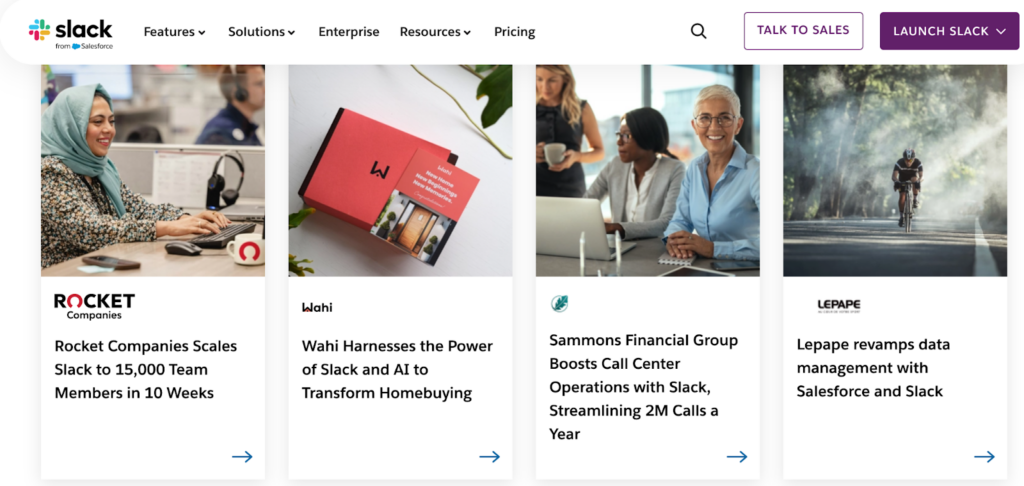Table of Contents

Authority scales when expertise comes first
Wordbrew helps teams collect expert insight before AI ever writes a word.
Built for expert-led, review-safe content
- Home
- »
- Content Marketing
- »
- Content marketing storytelling: The actual impact
-
Wordbrew
- 7 minutes read time
Content marketing storytelling: The actual impact
- Home
- »
- Content Marketing
- »
- Content marketing storytelling: The actual impact
Content marketing storytelling: The actual impact
Table of Contents

We like to stay good stories matter, but why?
Because stories let us resonate with target audiences long after they end. They help us build a relationship with the people that matter most.
Brands that stand out understand the art of storytelling—not just what they say but how they say it.
Content marketing storytelling builds more authentic connections with audiences. Our brains respond differently to narrative language than to facts and figures. Research from the NeuroLeadership Institute explains: “When we’re listening to a good story—heavy in detail, emotive, relatable—we tend to imagine ourselves in the same situation.”
Simply put: we see, hear, and feel stories. And that makes a lasting impact.
“No matter your business, you have insights that can answer a question or solve a problem. Storytelling does it in a way that keeps the reader interested and wanting to learn more,” says Ann Schreiber, CEO and owner of Copywriting For You. Storytelling marketing is more than engagement—it’s a powerful tool for building trust and connection.
TL;DR
- Storytelling in content marketing helps brands build trust, engage audiences, and drive results.
- By crafting authentic narratives brands can create emotional connections and stand out in a crowded market.
- Storytelling also enhances SEO by increasing time on page and reducing bounce rates.
- To craft stories that sell, focus on knowing your audience, framing relatable challenges, and tailoring content to different segments.
Why storytelling matters in content marketing
Audiences don’t connect with products; they connect with a compelling story they can relate to.
“People don’t remember facts and figures. If your story touches them emotionally, you get their attention, and they want to hear more,” says Paige Arnof-Fenn, Founder and CEO of Mavens & Moguls. “When you share your passion, war stories, mistakes or failures, audiences will connect and respond.”
Storytelling marketing builds trust, and trust builds loyalty. “Any content you put out there needs to demonstrate E-E-A-T: experience, expertise, authority, and trust,” notes Ann Schreiber.
According to PwC’s 2024 Trust in Business survey:
- 61% of consumers have recommended a trusted brand.
- 46% reported making additional purchases, and 28% paid a premium.
Real-life examples of storytelling
Marketers use storytelling elements in content marketing to appeal to audiences. Let’s look at four examples of storytelling and how top brands use them as part of their content marketing strategy.
1. Customer success stories
Customer success stories build trust and social proof by showcasing real-life impact. Marketers use storytelling in business to highlight how to solve problems and deliver tangible results.
“By framing features as a hero’s journey—highlighting customers’ challenges and ultimate victories—we saw a 40% uptick in engagement metrics and a notable boost in organic rankings,” shares Deepak Shukla, CEO of Pearl Lemon.

A great example is Slack’s Customer Stories series. They incorporate storytelling to show how Slack solves problems for companies like Canva and Spotify, providing relatable proof of value to potential customers.
Key takeaway: Focus customer success stories on specific outcomes to illustrate real-world impact.
“One memorable campaign featuring customer success stories led to a 40% increase in leads, proving that storytelling isn’t just engaging—it drives results.” Debbie Moran, Marketing Manager, RecurPost.
2. Mission-driven storytelling
Mission-driven storytelling techniques build loyalty by connecting audiences with your brand values and purpose.
“Using vivid images and real issues allows people to perceive themselves in the story, resulting in deeper engagement,” says Robin Fishley, SEO Director at DesignRush. “I shared a story about a struggling entrepreneur who achieved success with our solutions. The post garnered hundreds of responses from readers sharing their own experiences, considerably increasing its reach and emotional connection.”
Dove’s Real Beauty campaign is one of our favorite examples of storytelling in business. By creating a brand narrative with a core message challenging conventional beauty standards and promoting self-acceptance, Dove built trust and made a lasting cultural impact.

Key takeaway: Effective content reflecting your mission and core values can build meaningful relationships and credibility. Thought leadership and behind-the-scenes storytelling content tell a personal story and highlight expertise.
3. User-generated stories
By inviting audiences to share their experiences, marketers can build brand awareness through user-generated content (UGC).
“Our products are highly photogenic, so we actively encourage customers to share photos on social media, tagging @CustomNeon,” says Clare Jones, PR and Outreach Manager at Custom Neon. “We feature UGC in email campaigns, newsletters, and our website, creating a cycle of engagement that keeps our audience connected and invested.”

Apple’s Shot on iPhone campaign is another great example of a campaign that blends customer creativity with brand storytelling.
Key takeaway: Engage your audience with UCG, making them part of your brand story.
4. Data-driven storytelling
Marketers use data-driven storytelling marketing to bring abstract numbers to life and simplify complex messages.
“Original visuals like infographics, tables, and graphs break down complex ideas and support the narrative flow,” shares Milo Cruz, Content & SEO Lead at BuddyCRM. “When we’re covering a tricky CRM topic, creating an infographic adds real value for readers, increasing time on page and shares.”
Google’s Year in Search campaigns showcase how complex data can tell emotional, impactful brand stories.
Key takeaway: Visualize data through stories to simplify complex messages, increasing engagement, shares, and SEO impact.
How to tell a story that sells
Storytelling in business is different than simply writing a good story. It requires creativity, audience insight, and expert input.
Here’s where to begin:
1. Know your audience
Understand their problems, goals, and motivations. Use this insight to craft your core message and address specific pain points your product or service solves.
“The best way to leverage storytelling in content marketing is to think of the content through the lens of your reader. This approach ensures your content serves the audience rather than just your brand.” Jessica Robinson, Content Marketing Manager, CourseCompare
2. Frame the problem
Share experiences they can relate to or stories illustrating how your audience can overcome challenges. Stories that evoke emotion and authenticity are incredibly impactful.
“Working on a published web design project for a nonprofit client, we chose to tell a narrative capturing their mission, value, and how we helped them connect to a broader audience,” says Darryl Stevens, Founder and CEO of DIGITECH Web Design. “This story struck a chord, driving substantial engagement and shares, and ultimately resulting in coverage in a top industry publication.”
3. Analyze competitors
Look at what similar brands are doing and identify gaps or opportunities to differentiate your storytelling.
4. Choose the right format
Different types of content marketing formats resonate with different audiences and goals:
- Blogs and articles are great for detailed explanations and thought leadership.
- Case studies show real-life results and build trust.
- Use demo videos and explainer videos for accessible and engaging educational content.
- Social media campaigns are ideal for quick, snackable storytelling that encourages interaction.
5. Tailor stories for different segments
For instance, a financial planning app’s content marketing strategy might include a blog series with long-term investment tips for young professionals and a case study highlighting financial stability for retirees.
By aligning the right story with the right form of content, you can engage your audience while increasing brand awareness and authority.
Blending storytelling and SEO
Storytelling is more than creating emotional connection; it’s also a good SEO strategy.
“Weaving a narrative into content naturally leads to longer dwell times, reduced bounce rates, and higher engagement—all signals search engines love,” says Sean Begg Flint, Founder & Director at Position Digital. His team’s approach to a B2B content guide focused on user intent and addressing audience pain points, leading to a 60% increase in organic traffic over six months and top-three rankings for several high-intent keywords.
Marcus Clarke, Founder of Searchant, adds: “Incorporating compelling narratives into a client’s blog posts—like framing their journey with sustainable materials—resulted in a 35% increase in session duration and a 27% drop in bounce rates. Google loves engaged users, indirectly boosting their rankings for competitive keywords like ‘eco-friendly furniture.’”
When executed effectively, storytelling leads to higher engagement, reduced bounce rates, and improved rankings—an SEO win-win.
Measuring successful stories
The best brand storytelling combines creativity with data.
Track key metrics and performance indicators to identify what resonates with your audience and where you need to improve your content marketing strategy:
- Engagement rate: Likes, comments and shares indicate your story connects with readers.
- Time on page: Longer visits show that readers find your piece of content compelling enough to stay.
- Share rate: When readers share your story, it shows value, expanding your reach and credibility.
- Bounce rate: Low bounce rates demonstrate your content meets audience needs, which benefits SEO.
Create data-driven storytelling content by studying user behavior, keyword trends, and engagement metrics.
Content marketing storytelling trends
Storytelling marketing is growing in exciting ways, with new tools helping build personal connections with content. One trend is interactive content, which invites audiences to participate in stories with polls, quizzes, games, and more.
Another growing trend is AI-driven content marketing, a powerful tool for quickly creating personalized narratives.
Wordbrew’s all-in-one content platform streamlines the creation process by pairing AI tools with subject matter experts. We make it easy to turn expert knowledge and brand insights into unique, high-quality content.
- Customize content for any audience: Create effective content consistently aligned with your brand voice and strategic marketing goals.
- Combine AI with expert insights: Tap into our network of specialists or use your team’s knowledge to develop smart, original content.
- Simplify your workflow: Manage all stages of content creation, from brainstorming to publication.
Our approach pairs technology with human insights to create content that resonates with your audience and stays true to your brand voice.
Conclusion
Content marketing storytelling creates connections and builds trust. Whatever your marketing goals, storytelling marketing makes your brand unforgettable and delivers outstanding results.
Ready to tell stories that resonate? We can help you connect with your audience (and convert them!). Book a call with Wordbrew today, and we’ll help you bring your brand story to life.
FAQs
What are the 5 C’s of storytelling?
The 5 C’s are classic storytelling techniques for building storytelling content:
- Circumstance: Set the stage by introducing the setting, context, main characters, and situation.
- Curiosity: Spark interest using a problem or difficulty.
- Characters: Create more relatable characters that audiences can connect with.
- Conversations: Use natural dialogue to make the story engaging.
- Conflict: Introduce a central conflict that drives the story forward.
What are the 5 P’s of storytelling?
The 5 P’s are classic storytelling techniques that add depth and purpose:
- People: Focus on main characters, such as customers or brand characters.
- Place: Establish the setting to make the story immersive.
- Plot: Create a narrative structure with an event sequence that gives the story flow.
- Purpose: Align the story’s goal with your brand message and values.
Performance: Engage readers with vivid language, visuals, or emotional cues.
